 Click here if you want to read the interview in English.
Click here if you want to read the interview in English.Antes que nada, ¿cuándo empezaste a escribir?Empecé a escribir casi tan pronto como empecé a leer independientemente. Mis intentos literarios más tempranos fueron versiones de fanfiction; tan pronto como terminaba de leer un libro que amaba, escribía su secuela.
¿Tienes predilección por algún tipo especial de libro?Me encantan los libros que empiezan o tienen lugar en el mundo real, pero que también tienen elementos de fantasía —libros como El león, la bruja y el armario y la saga de Harry Potter, que nos llevan entre los paisajes mágicos y los no mágicos.
¿Has leído alguna distopía? Si es así, ¿qué te pareció?He leído El cuento de la criada, de Margaret Atwood, The Giver, de Lois Lowry, y el primer libro de Los Juegos del Hambre. Todos ellos son algo diferentes, que es la razón por la que me gusta la distopía como categoría —es realmente un marco imaginativo muy amplio, muy vasto.
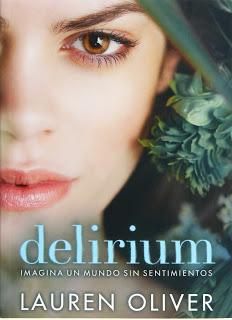 ¿De dónde surgió la idea de Delirium?La idea de Delirium vino de un ensayo de Gabriel García Márquez que leí, en el que él decía que todos los buenos libros eran sobre el amor o la muerte. Al día siguiente, estaba pensando acerca de esa cita ―particularmente acerca de cómo y en qué forma una historia de amor moderna podría ser contada― mientras estaba en la caminadora en el gimnasio. Simultáneamente, estaba viendo una noticia sobre un brote de gripe que tenía a todo el mundo asustado por la posibilidad de una pandemia, y estaba un poco asombrada de que las personas entran tan rápidamente en pánico por los informes sobre estas enfermedades, y en un punto los dos pensamientos ―amor y enfermedad― como que se combinaron en mi cabeza.
¿De dónde surgió la idea de Delirium?La idea de Delirium vino de un ensayo de Gabriel García Márquez que leí, en el que él decía que todos los buenos libros eran sobre el amor o la muerte. Al día siguiente, estaba pensando acerca de esa cita ―particularmente acerca de cómo y en qué forma una historia de amor moderna podría ser contada― mientras estaba en la caminadora en el gimnasio. Simultáneamente, estaba viendo una noticia sobre un brote de gripe que tenía a todo el mundo asustado por la posibilidad de una pandemia, y estaba un poco asombrada de que las personas entran tan rápidamente en pánico por los informes sobre estas enfermedades, y en un punto los dos pensamientos ―amor y enfermedad― como que se combinaron en mi cabeza. ¿Qué fue lo más difícil de escribirlo?Delirium requirió que concibiera un mundo totalmente nuevo: una ideología religiosa, social y política que soportaría y sostendría la idea del amor como una enfermedad. Así que fue un reto, pero uno divertido.
¿Alguno de los personajes del libro se parece a ti? Creo que tienes que proyectarte a ti mismo en todos tus personajes principales ―e incluso algunos de los menores. Usualmente soy una clase de amalgama de algunos de los personajes. En este caso, si tomaras a Lena ―algunos de sus temores, algo de su seriedad, y su centro fuerte― y la juntaras con algunas de las características de Hana ―su altura, actitud descarada, su deseo de diversión― me conseguirías.
¿Cuánto tiempo tardaste en recolectar las frases que usaste para el Manual de FSS?Las fui reuniendo mientras escribía el libro, para ayudarme a localizarme en la ideología del mundo. Escribí algunos pasajes que incluso nunca llegaron al libro final.
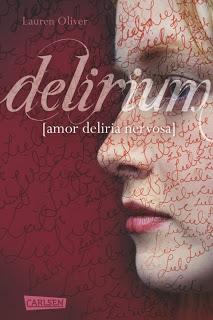 ¿Encuentras algún parecido entre la sociedad de Delirium y la nuestra? ¿Te inspiraste en algún rasgo del mundo actual para crear el tuyo?Ciertamente hay muchos lugares en el mundo hoy en día en los que las relaciones entre los sexos están estrictamente bajo mandato; en los que una sola ideología religiosa y política prevalece; en los que las personas no eligen a quién aman y con quién se casan. Afortunadamente, vivo en una democracia occidental liberal, por lo que tengo libertad para elegir. Pero, incluso en EE.UU. , veo que las personas pueden ser influenciadas muy fuertemente por los medios; que ellas pueden ser temerosas, y ciegas, y, por lo tanto, peligrosas.
¿Encuentras algún parecido entre la sociedad de Delirium y la nuestra? ¿Te inspiraste en algún rasgo del mundo actual para crear el tuyo?Ciertamente hay muchos lugares en el mundo hoy en día en los que las relaciones entre los sexos están estrictamente bajo mandato; en los que una sola ideología religiosa y política prevalece; en los que las personas no eligen a quién aman y con quién se casan. Afortunadamente, vivo en una democracia occidental liberal, por lo que tengo libertad para elegir. Pero, incluso en EE.UU. , veo que las personas pueden ser influenciadas muy fuertemente por los medios; que ellas pueden ser temerosas, y ciegas, y, por lo tanto, peligrosas.Para las personas que aun no hemos leído Pandemonium, ¿qué nos podrías adelantar?Pandemonium está dividido en dos secciones: Ahora, y Entonces. La sección de “Entonces” recobra la historia justo después del final de Delirium, y la sección de “Ahora” narra una porción de la vida de Lena alrededor de seis meses después. Las dos secciones se alternan hasta que los marcos de tiempo convergen. Lena evoluciona en una guerrera en este libro, y todo él está lleno de acción loca y escapes estrechos.
¿Cómo es tu proceso de escritura? ¿Haces una lluvia de ideas que luego estructuras o tienes una noción de lo que quieres y te dejas llevar por la inspiración?Cuando empiezo un nuevo libro, usualmente escribo alrededor de 15 a 20 mil palabras espontáneamente, para ver si el mundo de las historias y los personajes me gustan. Luego, si no me aburro o me atraco, voy más despacio y empiezo a generar un esbozo. Creo que de otra manera me pierdo en la oscuridad de la difícil sección del medio.
Interview with Lauren Oliver
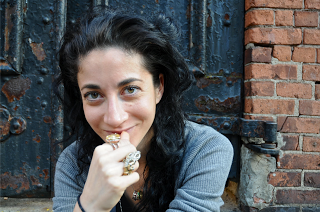 First of all, when did you start writing?I started writing pretty much as soon as I started reading independently. My earliest literary attempts were versions of fan fiction; as soon as I finished a book I loved, I would start writing its sequel.
First of all, when did you start writing?I started writing pretty much as soon as I started reading independently. My earliest literary attempts were versions of fan fiction; as soon as I finished a book I loved, I would start writing its sequel.Do you have a predilection for any particular type of book?I love books that start off or take place in the real world but also have elements of fantasy —books like The Lion, The Witch and The Wardrobe, and the Harry Potter series, which bring us back and forth between magical and non-magical landscapes.
Have you ever read a dystopia? If so, how was it?I’ve read Margaret Atwood’s A Handmaid’s Tale, and The Giver, by Lois Lowry, and the first book of the Hunger Games series. They’re all quite different, which is why I like dystopia as a category —it’s really just a very broad, very vast imaginative framework.
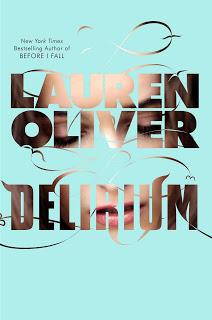 Where did the idea of Delirium come from?The idea for Delirium came from an essay I read by Gabriel Garcia Marquez, in which he wrote that all great books were about love or death. The next day I was thinking about that quote —particularly about how and in what form a modern love story could be told— while I was on the treadmill at the gym. I was simultaneously watching a news story about a flu outbreak that had everyone freaking out about the possibility of a pandemic, and I was kind of marveling that people so easily go into panics about reports of these diseases, and at some point the two trains of thought —love, and disease— just sort of combined in my head. What was the hardest thing about writing it?Delirium required me to conceive of a whole new world: a religious, social, and political ideology that would support and uphold the idea of love as a disease. So that was a challenge, but a fun one.
Where did the idea of Delirium come from?The idea for Delirium came from an essay I read by Gabriel Garcia Marquez, in which he wrote that all great books were about love or death. The next day I was thinking about that quote —particularly about how and in what form a modern love story could be told— while I was on the treadmill at the gym. I was simultaneously watching a news story about a flu outbreak that had everyone freaking out about the possibility of a pandemic, and I was kind of marveling that people so easily go into panics about reports of these diseases, and at some point the two trains of thought —love, and disease— just sort of combined in my head. What was the hardest thing about writing it?Delirium required me to conceive of a whole new world: a religious, social, and political ideology that would support and uphold the idea of love as a disease. So that was a challenge, but a fun one. Are any of the characters similar to you?I think you have to project yourself into all of your major characters —and even some of your minor ones! I’m usually some kind of amalgam of a few characters. In this case, if you took Lena —some of her fears, some of her thoughtfulness, and her ultimately strong center —and smushed it together with some of Hana’s characteristics —her height, her brazen attitude, her desire for fun —you’d get me.
How much did it take you to collect all the phrases you used for The Book of Shhh?I assembled them as I was writing the book, to help localize me in the ideology of the world. I wrote quite a few passages that never even made it in to the final book.
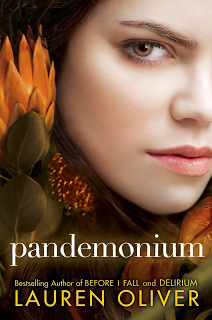 Do you find any similarity between Delirium's society and ours? Were you inspired by any characteristic of today's world to create your own one?There are certainly many places in the world today in which relationships between the sexes are strictly mandated; in which one single religious and political ideology prevails; in which people do not get to choose who they love and marry. Thankfully, I live in a liberal western democracy, so I have the freedom to choose. But even in the USA, I see that people can be strongly influenced by the media; that they can be fearful, and unquestioning, and thus, dangerous.
Do you find any similarity between Delirium's society and ours? Were you inspired by any characteristic of today's world to create your own one?There are certainly many places in the world today in which relationships between the sexes are strictly mandated; in which one single religious and political ideology prevails; in which people do not get to choose who they love and marry. Thankfully, I live in a liberal western democracy, so I have the freedom to choose. But even in the USA, I see that people can be strongly influenced by the media; that they can be fearful, and unquestioning, and thus, dangerous.For those ones who haven't read Pandemonium yet, what would you tell us about it?Pandemonium is divided into two sections: Now, and Then. The “Then” section picks up right after Delirium lets off, and the “Now” section narrates a portion of Lena’s life about six months later. The two sections alternate until the time frames converge. Lena really evolves into a warrior in this book, and the whole book is full of crazy action and narrow escapes.
How is your writing process? Do you brainstorm and then organize your ideas or do you have a notion of what you want and then you let yourself be driven by inspiration?When I begin a new book, I usually write about 15-20K words off the cuff, to see whether the world of the stories and the characters appeal to me. Then, if I don’t get bored or stuck, I slow down and begin to generate an outline. I find that otherwise, I get lost in the murk of that tricky middle section!
